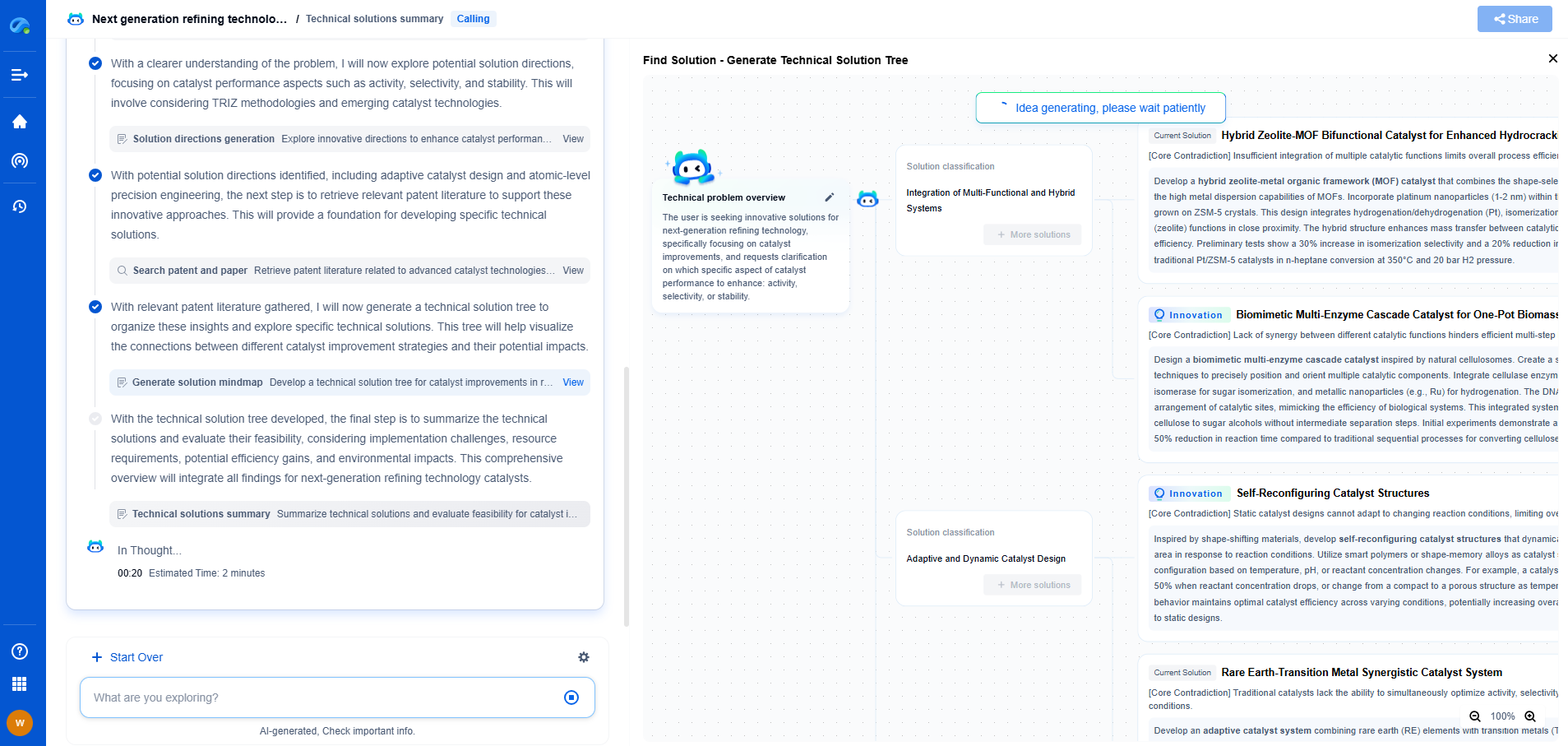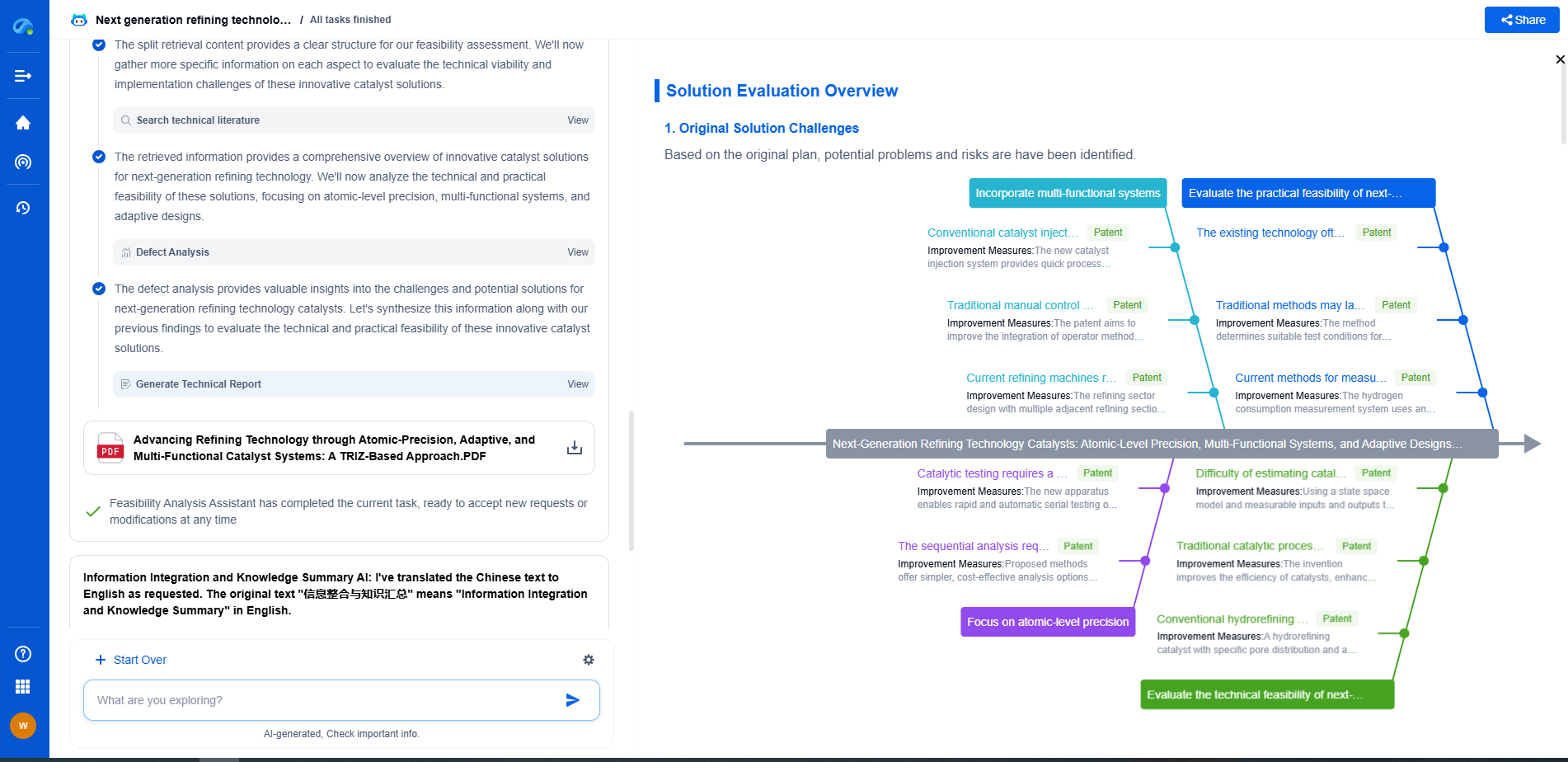What Is Q-Switching and Why Is It Used in Lasers?
JUN 26, 2025 |
Q-switching is a crucial technique used in laser technology, enabling the generation of short, intense pulses of light. This technique directly impacts the performance of lasers in various applications, making it essential for anyone interested in laser technology to understand. The fundamental principle behind Q-switching involves manipulating the quality factor (or "Q factor") of a laser cavity to produce energy bursts significantly higher than in continuous wave lasers.
How Q-Switching Works
The process of Q-switching can be thought of as storing energy in a laser medium and then releasing it all at once. Initially, the laser's optical cavity is "closed," preventing laser light from building up and escaping. During this phase, energy is accumulated within the active laser medium. Once sufficient energy is stored, the Q-switch "opens" the optical cavity, allowing the stored energy to be released in a single, powerful pulse. This rapid release results in a laser output pulse that is much more intense than what the laser could produce in a steady, continuous operation.
Types of Q-Switching
There are two primary methods of Q-switching: active and passive. Active Q-switching involves external control where a device such as an acousto-optic or electro-optic modulator is used to manage the Q factor of the laser cavity. These devices can quickly alter the optical path or the refractive index within the cavity, enabling precise control over pulse generation.
On the other hand, passive Q-switching involves the use of saturable absorbers - materials or devices that become transparent when exposed to high-intensity light. As the laser energy builds up, the absorber becomes saturated and allows the stored energy to be released as a pulse. This method is typically simpler and more cost-effective but offers less control over the pulse parameters compared to active Q-switching.
Applications of Q-Switched Lasers
The intense, short pulses generated by Q-switched lasers find applications in various fields. One of the most prevalent uses is in the medical industry, particularly for dermatological procedures like tattoo removal and skin resurfacing. The high-intensity pulses can effectively break down the ink particles in tattoos or stimulate collagen production in the skin without causing significant damage to surrounding tissues.
In the field of materials processing, Q-switched lasers are invaluable for precision cutting, engraving, and marking. The ability to produce concentrated energy bursts allows for fine, detailed work on a variety of materials, including metals, plastics, and ceramics. This precision is crucial for industries such as electronics, where components are becoming increasingly miniature and intricate.
Moreover, Q-switched lasers are employed in scientific research for applications such as laser-induced breakdown spectroscopy (LIBS) and LIDAR technology, where short, powerful pulses can be used to analyze material compositions or measure distances with high accuracy.
Advantages and Limitations
The primary advantage of Q-switching is its ability to generate extremely high peak power pulses. This capability enables lasers to perform tasks that require significant energy over a brief period, which would be impossible with continuous wave lasers. Additionally, Q-switched lasers offer high precision and can be finely tuned for specific applications.
However, there are limitations. The complexity and cost of active Q-switching equipment can be a barrier for some applications, while passive Q-switching, although simpler, offers less control over pulse characteristics. Furthermore, the high peak powers achieved with Q-switching can sometimes lead to thermal and mechanical stress within the laser components, potentially affecting the longevity and reliability of the laser system.
Conclusion
Q-switching stands as a pivotal concept in the world of lasers, opening doors to applications that require precision and high-impact energy delivery. Whether through active modulation or passive absorption, the technique exemplifies the ingenuity and adaptability of laser technology. As the demand for more sophisticated laser applications grows, understanding and employing Q-switching will remain essential for innovation and advancement in the field.
Empower Electromagnetic Innovation with Patsnap Eureka
From high-frequency antenna arrays and electromagnetic shielding to plasma propulsion and wave-based energy transfer, the electromagnetic domain sits at the core of next-generation technologies. Yet navigating its vast landscape of patents, research papers, and evolving technical standards can be time-consuming and complex.
Patsnap Eureka, our intelligent AI assistant built for R&D professionals in high-tech sectors, empowers you with real-time expert-level analysis, technology roadmap exploration, and strategic mapping of core patents—all within a seamless, user-friendly interface.
👉 Experience Patsnap Eureka today and transform how your team navigates the complexity of electromagnetic innovation.
- R&D
- Intellectual Property
- Life Sciences
- Materials
- Tech Scout
- Unparalleled Data Quality
- Higher Quality Content
- 60% Fewer Hallucinations
Browse by: Latest US Patents, China's latest patents, Technical Efficacy Thesaurus, Application Domain, Technology Topic, Popular Technical Reports.
© 2025 PatSnap. All rights reserved.Legal|Privacy policy|Modern Slavery Act Transparency Statement|Sitemap|About US| Contact US: help@patsnap.com

